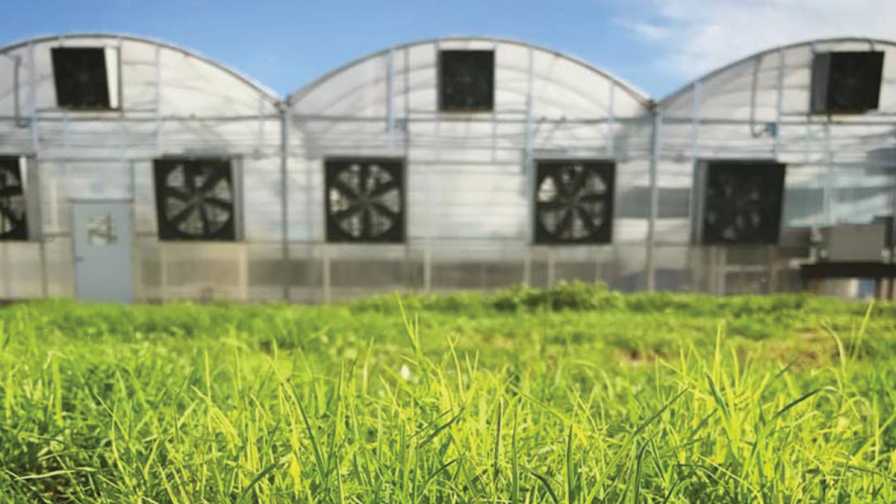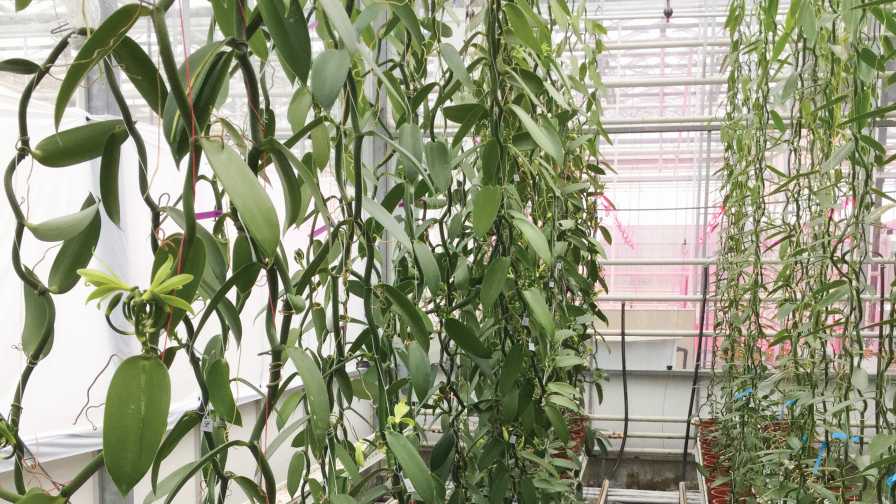6 Greenhouse Crops to Consider for Niche Production

Looking to add an alternative crop to your portfolio? The learning curve for specialty greens is low, which means greenhouse growers can often get a quick crop turnover.
Photo by Chaz Shelton
The definition of what is considered an alternative crop for greenhouse production will likely differ depending on who you ask. After all, pretty much every plant grown in a greenhouse probably started out as a niche offering, until a wider audience found its potential.
This also means that what might be considered an alternative crop today could easily become the next big thing that every grower views as their guaranteed ticket to a new market. Greenhouse-grown hemp and leafy greens are just two crops that might fall into this category.
Here is a closer look at some selections that might be considered an alternative crop, and the risk/reward factors that can help you decide whether they are worth pursuing.
Mushrooms
The market demand for gourmet and medicinal mushrooms is increasing substantially, according to Barry Pryor, a Professor in the School of Plant Sciences at the University of Arizona.
“The risks of production are not great if facilities are set up properly, and there are several comprehensive production guides available online,” Pryor says. “Getting markets established is probably the biggest challenge.”
Another advantage is that some oyster and shiitake varieties can yield incredibly high returns per square foot. And if you can get connected to a farmers’ market in your area, you can generate quick sales.
These high returns, however, also make it a risk, says Paul Brentlinger of CropKing Inc., which sells packages that include all the necessary structures and equipment for mushroom production.
“There is a decent amount of production moving into mushrooms, even though consumption is not increasing at the same rate,” Brentlinger says.
Stacy Tollefson, a Professor in the Controlled Environment Agriculture Center at the University of Arizona, also notes that while gourmet mushrooms can be a moneymaker, growers need tight production controls, as well as an autoclave (which can be a substantial investment) to sterilize growing media.
Strawberries
On a general level, the production of strawberries and other berry crops would certainly not be considered alternative. However, while most international berry production is done under some sort of cover, here in the U.S., other than the biggest growers such as Driscoll’s, there are not a lot of berries being grown in a controlled environment.
Variety selection is extremely important. Growers have to know the most ideal cultural techniques that will lead to quality fruit production, in particular a crop that will last on store shelves.
“The costs involved in all of this make it difficult to get high margins,” Brentlinger says.
Hops
The ever-growing craft beer craze has made hops a popular crop choice. The advantage of greenhouse-grown hops, Brentlinger says, is that it gives growers a better opportunity to provide wet hops (meaning it can be delivered to a brewer within 24 hours of harvest), which is a big deal for breweries.
Brentlinger cautions that hops typically need to be hand-harvested, as the development of automation technology is lagging.
“Hops are easy to grow, but there is a ton of labor involved,” Brentlinger says. “Like any crop, maintaining cultural practices is a big deal, and the labor involved is the question mark as to whether hops can be profitable.”
Tollefson notes it can be difficult to get high yields of hops, and the crop also is very hard to manage in terms of pests.
“We still need to work on growing the right hops cultivars and setting the most ideal environmental parameters,” Tollefson says.
Ginseng
Crop experts at Rimol Greenhouses say that ginseng, when marketed as a healing herb and tonic, has so much profit potential that it has been dubbed “green gold.” For growers who have a small vacant plot and a lot of patience, this plant can reap huge rewards.
Why patience? Because growing ginseng can take up to six years, which is how long it takes for the roots to fully mature so they can be harvested for consumption.
“If that is well beyond your timeframe, you can also sell young rootlets to other growers to bring some return on investment within a manageable timeframe,” according to a blog posted by the Rimol growing team earlier this year.
“Over the six-year period, growers can make as much as $100,000 on a half-acre plot from seeds, rootlets, and mature roots,” the blog says. “With ginseng, early birds most definitely do not get the worm.”

Overhead irrigation and a reliable heating source are critical if you want to be successful in producing vanilla.
Photo by Filip van Noort
Vanilla
Vanilla as a greenhouse crop is definitely still in its infancy. Aside from a lack of viable research in the U.S., Tollefson says that vanilla is a labor-intensive crop because it must be hand-pollinated.
On the plus side, the Wageningen University Research Program in the Netherlands has recently enhanced its vanilla flower research. Tycho Vermeulen of Wageningen University says a greenhouse set up for vanilla production needs a sustainable heating source and an overhead irrigation system.
“The advantage of growing vanilla in a greenhouse is that you’re more likely to get a uniform crop,” Vermeulen says.
Filip van Noort, another researcher with Wageningen, says the lack of good plant material and an overall lack of knowledge remain obstacles.
“However, if you’re a grower who has time to learn, money to invest, and a market to buy it, you’re off to a good start,” van Noort says.
Specialty Greens
Leafy greens, as a whole, is another crop that would not be considered alternative. However, the more specialized you can be, the more likely you can find a niche market.
“Many of these growers are producing a crop on less than half an acre,” Brentlinger says. “For many of them, it’s easy to diversify your crop selection and stick out from other growers.”
Chaz Shelton of Merchant Gardens in Tucson, AZ, says the learning curve for specialty greens is low, and you can usually get a quick crop turnover.
“The risk is the potential for massive competition, as most early entrants into indoor hydroponics start with leafy greens, which can lead to market oversupply.”
Do Your Homework
- If you’re considering adding an alternative crop to your mix, be sure to consider some of these factors.
- Do you have access to good production information? The drawback of venturing into a unique crop can be a lack of proven research on how to grow it correctly.
- How much labor is involved in producing the crop?
- Do you have a potential market to sell to? Do your research and find out what your customers want. At the same time, however, don’t jump right in without answering the next question first.
- What are the economies of scale? It’s important to know the cost of adding a crop compared to the profit you hope to gain.
- Does this crop offer potential health benefits? Leigh Coulter of GGS Structures says that with the aging of the baby boomer generation, the interest in products that relate to health will likely continue to grow.
- Is it a crop that is better served for greenhouse production if it means fewer disease problems?









